At the virtual roundtable on public health, held Tuesday, Dec. 15, via Zoom, the participants were Dr. James Kravec, chief medical officer, Mercy Health-Youngstown and medical director for the Mahoning County Board of Health; Dr. Michael Bigham, chief quality officer for Akron Children’s Hospital and pediatric intensivist of its intensive care unit; Dr. George Garrow, chief medical officer of Primary Health Network and board member of the Buhl Regional Health Foundation; Erin Bishop, commissioner of the Youngstown Board of Health; Ryan Tekac, commissioner of the Mahoning County Board of Health; Wes Vins, commissioner of the Columbiana County Board of Health; and Sarah Lowry, director of Healthy Community Partnership, Youngstown. Leading the discussion was Jeremy Lydic, content manager of The Business Journal. Dennis LaRue, copy editor, edited the transcript. Also participating was Jeff Leo Herrmann, CEO of the Youngstown Publishing Co., parent of The Business Journal. Photos were provided by the participants.
The Business Journal: Identify some of the health issues the coronavirus pandemic has either brought to light or exacerbated in the region.
Dr. James Kravec, chief medical officer, Mercy Health Youngstown and Mahoning County Board of Health medical director: What I’ve learned from this is the truly wonderful partnership between health systems and public health.
Dr. Michael Bigham, chief quality officer, Akron Children’s Hospital and a pediatric intensivist in its intensive care unit: Most of us are aware that uniquely for coronavirus, children have been spared compared to adults. But they’ve not been fully spared. We’re seeing some of them as some of our sickest patients in our ICUs.

That said, what’s struck me around the care of children is, No. 1, most children have adults to look after them. So all of the things impacting the adults are directly impacting our children as well.
One of the most profound observations is the interdependence between public health and the school systems. Akron Children’s Hospital has a profound presence in so many of our school districts by providing school health services. It’s been impressive to see how nimble the public health community has been in support of the schools that have been leading up to those in desperate need of guidance.
The second observation is the bright light that has been shone on issues related to health disparity and the profound absence of health equity. This is something that’s been a priority of Akron Children’s Hospital long before the COVID pandemic. But there has been an effort to eliminate health disparities and achieve full health equity for our pediatric patient population.
We recognize that there’s not any single hospital or single practice working independently. It’s got to be built on partnerships with community nonprofits, partnerships with public health, partnerships with schools.
We are enthusiastic about the fact that there is a brighter light and a little more direction, more urgency provided toward solutions around health equity.
We’re excited to partner on work in those areas.
Erin Bishop, Youngstown City Health District commissioner: I want to talk about health disparities, especially here in the city of Youngstown. We have seen it in our minority population.
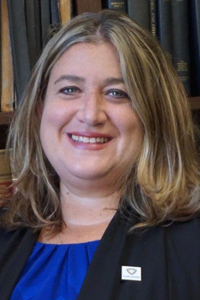
Just knowing people in our community and talking with them, we hear accounts about many people who have lost their lives. We saw just recently that our own former councilperson, Artis Gilliam, lost his life to COVID-19.
We are lucky to have [the city] office of minority health. We have been working with our patients and our residents to get into the neighborhoods. That’s why, when we started working on [COVID] testing, we went into all the communities. On each side of town, we tried to get there each week so that people who lived in those neighborhoods could come be tested as opposed to having to get in a car or get on the bus and get somewhere else.
That’s how we’ve been tackling that issue. We had been leaning on our local office. As we’re moving into the vaccinations, a lot of our population is nervous and concerned. We want to be able to tackle that issue.
Dr. George Garrow, chief medical officer, Primary Health Network and member of the board of the Buhl Regional Health System: One of the things that I have learned throughout this public health emergency is related to health disparity and a relative lack of trust in certain pockets in our community for health authorities, for public health officials, for government officials.
A big challenge that I’ve been trying to understand is how can we collectively as a community re-establish and gain trust, particularly of disaffected communities and groups. I think in order for us to succeed in the [pandemic] mitigation and for us to succeed in the vaccination campaigns related to COVID-19, it’s essential that we earn trust. I’m interested in the comments and expertise of the others on the panel about ways that we might be able to work together to re-engage trust in our community.
Wes Vins, Columbiana County Health District commissioner: The issues that have been exacerbated in our county are the attention to the rural community where people are generationally affected by poverty. Those issues surfaced because, as the pandemic evolved, we saw the economic disparities. So a lot of our folks wrestled with many issues related to the economic impact.
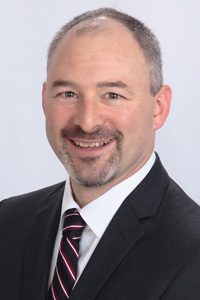
Initially, we saw a lot of that and then obviously the access to health care in a rural community. We have access points, but with barriers like transportation and [lack of] insurance coverage, it made it difficult for some in our rural community who live in poverty.
Then with our seniors, we had to deal with isolation. There’s an entire component of this under the health disparities. If we look at our seniors, isolation and the mental health impact on them – not just on the seniors themselves but because of the culture – they sometimes have multigenerational homes or multigenerational families who rely on one another to get through emergencies and crises like these.
The impact on those seniors, the mental health impact, translates into other impacts on the rest of their families. That resulted in a lot of stress in the home, both economically and emotionally.
Ryan Tekac, Mahoning County Board of Health commissioner: I want to build a little bit on what Dr. Kravec and Dr. Bigham said. It’s the importance of making sure that relationships are built within the community. We knew when this pandemic started there was going to be a heavy lift from public health. We knew that with our health systems and with how we’re set up from previous emergency response preparedness – the relationships that we’ve built over the years. Since 2002, public health has been practicing preparedness activities to address issues such as when a pandemic hits.
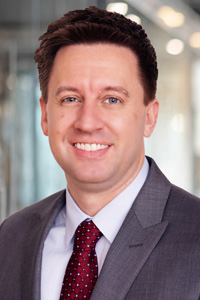
Having those relationships, at least in Mahoning County, [includes] a relationship with our EMA [Emergency Management Agency] director, with the Youngstown City Health District, with our other health partners. There were many times that we as a health department have been on the phone with either Columbiana, Trumbull County, Youngstown city, and other health departments. Almost everybody came to our side – our county commissioners, fire and police. Everybody wanted to help.
Going back to our school systems, this was something new for the schools and for them to take direction and build relationships with public health. That proved that schools were starting to get back in place, that they wanted to listen to public health, to build a relationship and ensure that our kids were going back. Not only to ensure safe instruction, but to ensure that, if there was a case [of COVID-19], that it wasn’t going to be brought back into the family homes
Sarah Lowry, director of Healthy Community Partnership: For those of you who may be hearing about us for the first time, we’re supported through the Community Foundation [of the Mahoning Valley], specifically their health-focused funds. The purpose of the Healthy Community Partnership is to pull together partners and stakeholders from all sorts of different sectors and backgrounds for a shared mission to improve health and health equity and well-being in the Mahoning Valley. We focus on Mahoning and Trumbull counties.

Very early on in the pandemic, we saw [problems] come to light that we have known – certainly health disparities. Also understanding that we need to bolster and recognize those social and environmental factors that impact health, such as access to food.
With the pandemic and so many indoor spaces in March and April having been shut down, more people went outside. There have been national and local conversations about the need for investment to build infrastructure to make sure that folks have welcoming outdoor spaces near them so they can be physically active.
Mental health is another significant concern. We’ve tried to use our biggest asset of the partnership, our network and our relationships, to help to support our individual partners in their efforts.
We’ve also seen new partnerships built to address issues like food access. Specifically, we’re making sure that seniors either have food delivered to them or have the tools to get connected to organizations doing that kind of work.
We also want to use this as an opportunity to not only think about the immediate needs to support the rapid response efforts but how can we think longer term. There have been some opportunities to think about policy change that came out of this. How can we, for example, take advantage of the pilot program in Ohio to allow SNAP [food stamp] recipients to use their benefits to order groceries online?
A small number of retailers allow this. How can we make that more permanent so that more individuals, more frequently and in the longer term are able to use those benefits to make sure that food access is not something that folks continue to have to work through? We know that was an issue in the Mahoning Valley before the pandemic and certainly in the pandemic and COVID-19 has, as many said, shone a light on some of those disparities and issues.
We’ve been trying to pull together our resources, support our partners, and address those social determinants of health and make the case for some longer-term changes.
The Business Journal: You bring up a very important point, the social determinants of population health. Regarding social determinants, public health infrastructure, accessibility, these are common concerns that everyone said are being recognized.
What is the public health community doing or what does the public health community need to do to address the issues you raised?
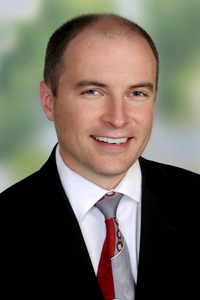
Kravec, Mercy Health-Youngstown chief medical officer; medical director, Mahoning County Health Department: As we think about public health, we think about the social determinants of health and about population health. All related but yet all separate. So tightly tied together and truly the social determinants of health tie all these pieces together.
From a medical group standpoint, from a hospital system standpoint, population health is the new buzzword from 2015 on. It’s going to be the reality that’s set in of how we’re handling patients moving forward.
Essentially, population health is how we take care of the community – meaning overall better care of diabetes, high blood pressure, pneumonia vaccines, colonoscopy and mammograms, those types of things. That’s population health.
It’s easy to say everyone needs to have a colonoscopy. Everyone needs to have a mammogram.
But the social determinants of health: what education is needed for that? Where is the access to transportation to get there? What is the access to getting a test done because of cost? Is telehealth available when someone doesn’t have a transport?
All those pieces are part of the social determinants of health. That is one of the most important public health issues right now.
We talk about racism as a public health emergency. That does cause people to not get tests. The cost of the payments does not allow people to get tests done. That does affect the health of the community. It affects the population’s health, and that’s probably one of the most important issues that health systems and health departments need to focus on.
Bigham, chief quality officer, Akron Children’s Hospital: I can’t agree more with what Dr. Kravec said. We talk a lot about providing excellent care for the patients in our primary care practices or in our hospitals. True health – and again, [Akron Children’s] lens is really around child health – is continued health regardless of where the children are in their communities, in their schools, or whether they’re in front of us.
We know that much more of a child’s health is influenced by things outside of the walls of Akron Children’s Hospital than inside. To reinforce what is critical to advancing children’s health or all health, there are many instances where patients are in front of us but we still can’t influence their overall health because of social determinants. We’re doing screening and detection of some of those social determinants of health.
To the extent that the public health system can do the same, it feels important to merge or meld those barriers as we detect and learn of them. Similarly, we work in tandem to mitigate those social determinants of health through those barriers to overall health.
Because if Akron Children’s detects some of these social determinants of health, we’re working hard to get people plugged into community resources. But we’re not seeing all of those patients in front of us at all times.
There’s got to be complementary mechanisms to improve the detection of some of those barriers.
Vins, Columbiana County Health District commissioner: One of the biggest tools we can use to overcome some of those barriers – telehealth and communicating some of the universal messaging to address chronic diseases – is access to the internet.
We like to think that most people have access to internet. But we have a large part of the population in Columbiana County who don’t have access to the internet or to communicate the message or to telehealth, which then makes worse those issues of transportation and child care and economic barriers.
With access to the internet, we can not just improve the health side but we could also then impact education as we start to deal with some of these remote learning options.
The Business Journal: What specifically can the health care communities do, whether it’s from the health departments or the providers? What is needed to fill some of these gaps?
Bishop, Youngstown City Health District commissioner: We’ve been involved with Ryan [Tekac] at the Mahoning County Public Health and Mercy Health in regards to infant mortality. We’ve been working on that since 2012. For years, Ohio had the worst record for Black infant mortality. A Black baby born in Ohio had the worst chance of surviving to their first birthday than anywhere else in the country.
We woke up in 2012 and began working together and we have some wonderful programs through Akron Children’s, Mercy Health, the health departments.
We were seeing things change but it was a decrease in our White infant mortality. Unfortunately, we were still seeing an increase in Black infant mortality. We were like, “How can this be? We’re doing all these programs. We’re reaching the people, right?”
Or so we thought.
About 2018, coming together with all the health departments, we decided that we’re going to continue these great programs but we needed to shift our focus to the social determinants of health. In talking to community and what the people needed, the No. 1 thing that came up was food access. Which we’re tackling with the Healthy Community Partnership, transportation and then housing.
About transportation – it’s wonderful. I saw just this morning that WRTA [Western Reserve Transportation Authority] has extended to June 2021 its free transportation. They have been wonderful throughout this whole COVID-19 pandemic.
People can now get free transportation until 2021 but think about the people before who needed to get to their doctor offices. That wasn’t happening. We still need to work on that issue.
Then housing. When a mother is worried about where she’s putting her head down at night because she’s living in deplorable conditions or she can’t make the rent.
These are things that we have shifted our focus to. By the leadership of our local public health community and by working with our hospital systems, we’re hoping to see a difference. Because we just cannot continue down this path where our Black babies are dying at a rate three or four times greater than our White babies.
Garrow, chief medical officer, Primary Health Network: One thing that I’ve been trying to incorporate into our practice at the community health center is this: When we were students in medical school, we were asked what is the [patients’] chief complaint? We would begin the interaction by asking, ‘What’s the matter?”
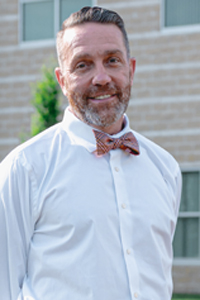
Instead, today we try to incorporate and understand and address social determinants of health. Managing a hemoglobin A1C or making sure that a person’s cholesterol is well controlled may be relatively important to us. What matters to the person in front of us may be “I don’t know where I’m going to sleep tonight.’ Or “I don’t know how many more meals I’m going to have before I run out of food.”
Recognizing that the [patient’s] chief complaint and their agenda may be something very different than ours – we’re accepting, acknowledging and hearing what matters. [Then we’re] following through and making a referral and a resource to agencies like the Buhl Regional Health Foundation here in Mercer County or the Community Action Partnership in Mahoning County to connect individuals to resources that address those needs.
There’s nothing more frustrating than realizing that someone is having a social determinant concern and not being able to address it.
Collectively, organizations like the Community Action Partnership and the Buhl Regional Health Foundation can be the glue to bring these resources together. We’re very fortunate in our community to have those types of programs.
Lowry, Healthy Community Partnership: These organizations spotlight social determinants and health disparities, specifically how racism is impacting health outcomes. We’ve also seen a lot of communities coming together to recognize and declare racism as a public health crisis.
We’ve seen the shift in the way people are thinking about trying to solve these large systemic problems with programmatic solutions. Now we are seeing more communities thinking about how we can use policy as another tool in the toolbox, not to replace programs. We still need those.
How can we use the success stories and challenges that come through these kinds of programs to make the case to decision-makers about how and why some policies need to be adapted? We want to think about where resources are going.
Programs and organizations or institutions, like public health and health care, may need more resources. Because these are huge problems and no one organization is able to truly address them, as they should to reach the thousands of people affected.
The Business Journal: Then what policies need to be changed? How can these issues be resolved?
Garrow, chief medical officer, Primary Health Network: Follow the money. Historically, [health care has] been fee-paid for service. We’ve been rewarded for procedures and the use of high-tech diagnostic equipment, etc.
Relatively speaking, reimbursement and money for preventive health in public health has been much, much less significant than the high-tech, high-end things that we do.
One thing I’m looking forward to as we pull out of the global health pandemic is what we can do differently from a public health reimbursement standpoint to invest in the programs and the initiatives to improve the health of our community. How can we not rely on high-tech, high-end glitzy things? Where could the money be better spent so we get a better return on our investment?
Kravec: I would echo with what Dr. Garrow said. What’s important is to understand how health systems and primary care physicians get paid. There’s an old way and a new way and we’re in the middle right now.
The old way was the more patients you saw, the more payments you received, either from Medicaid or private insurance. The future way is you’re paid on quality payments based on outcomes. Those outcomes are not just: Is your diabetes under control? Rather they’re: Did you get your colonoscopy done? How can I help you get your colonoscopy done? How can I help you eat a better diet and get exercise?
Right now, we’re in the middle. We still have volume payments. In fact, that’s the majority of it. Still, 75% of our money comes from volume.
We do have a small chunk, a quarter or so, of the money that comes in for quality payments and outcomes payments. Over time, we know that’s changing.
As primary care physicians, as health systems get paid more for quality and outcomes, they will be investing, along with the public health departments and the governments, in programs and individual patient scenarios that will help them have better outcomes and reduce their social determinants and disparities.
Bigham, chief quality officer, Akron Children’s Hospital: It is that population health vision, which is if patients in the community are getting good nutrition, getting good education, do they have safe spaces to live in? All of that is critical to a child’s health.
Health systems, whether they be public health or health care networks, should be supportive of that, which we always have been. None of us have worked against that but it hasn’t been tied to any level of reimbursement.
All of our organizations, whether public or private, have spent countless unreimbursed investments in health and wellness in our patients and our communities. I see those going up exponentially as the reimbursement follows.
It’s not as though anybody’s been working against that but it’s the pace and the fervor that we’re going to pursue in child health as the alignments become more sensibly aligned with health and wellness in our communities.
Vins, Columbiana County Health Department:: Two points on that. Certainly one is the economic side. And as we start to move to this newer model that Dr. Kravec talked about, it makes it difficult to look at and consider the investment that we would need to make into public health and other mechanisms to improve overall community health through addressing chronic disease.
We recognize that the impact of chronic diseases has been disproportionately affected by coronavirus. The whole investment into the health care system, direct patient care as well as the larger community and population health efforts, needs to be understood.
My second point is that we need to look at policy development in nearly every sector because the coronavirus response has opened our eyes to see that public health is a continuum.
We all have a role in public health, from the individual resident to the corporate citizen.
This continuum of partners and participation that we see in the response for coronavirus makes us recognize that health needs to be incorporated into all sectors of all the things that we do. In all policy development, be it transportation or health care system or construction, green space, parks, exercise. All those pieces.
We need to consider all of that policy development through a lens of health so that when there’s opportunity to infuse a health option or to improve a community health issue, we can incorporate that into all policy development. That adds further importance to the relationship between legislation and policy makers to the health care system.
The Business Journal: The thing I’d like to touch on is this idea of awareness among the communities as far as preventive health measures, tying them into something that Erin Bishop and George Garrow touched on, this nervousness over the coronavirus vaccine, and the lack of trust.
[To Tekac] How can the health district bridge that communication gap with some of the minority populations to build that trust so we can start pushing that message of prevention?
Tekac, Mahoning County Board of Health commissioner: There are many opportunities for what a health department can do. One is we have what we call PIO [public information officer] teams. We ensure that we’re getting correct, positive messaging out to the public. But when we start to look at some of our urban areas, what these individuals need is trust that comes from individuals delivering the message who look like them.
When we look at people of color, we need to ensure that those going out to address these health issues and to educate them are individuals that they can relate to.
We have a model here through Mahoning County Public Health Pathways HUB program where we use community health workers. These are individuals throughout the community who can go out and work with individuals and educate them at a level that they would understand.
Bishop, Youngstown City Health District commissioner: Since the very beginning of the pandemic, Mayor [Jamael Tito] Brown has worked with local churches. We were meeting weekly on Thursdays and would talk about the pandemic, what was happening. This is when a lot of the clergy wanted to know whether they should keep their churches open, what they could do to help.
I was the sounding board for them and we talked about things and then we spent the next 20 minutes in prayer for the community and everyone else knee deep in this.
As things went on, we started meeting every other week. I was able to build that relationship with them so that when we wanted to do testing, they were open, saying, “Hey, come have it at our church. You can have it here at our church.” They were more welcoming.
I remember going to the Rev. Michael Harrison’s church. [Union Baptist] When we did the testing there, I asked an older woman, where did you find out about this?
“Oh, my pastor said come and get it,” I was told.
It was good that their pastor would talk about it on a Zoom call because they weren’t having in-person services.
I asked, “What did he say? You aren’t going to Heaven if you don’t come?”
There were a lot of older Black women who didn’t want to leave their houses. But they came [to get testing] because their pastor told them to. That’s the approach we’re going to have moving on to the vaccine.
Already I have received a text from my very good friend, a minister on our board. He’s deathly afraid of needles. But he said he would do it, get the vaccine on TV if he had to, just to encourage his congregation to get it.
Using those faith leaders would be very important and talking about it. Just growing up in the church, as I did, you do trust your priests and your pastors. We’ll use that approach to build that trust.
Lowry, Healthy Community Partnership: We’re in a network of folks who represent various organizations throughout Ohio. The neighborhood approach to testing was something that a lot of folks said, “Oh, wow, that’s really incredible.” This is going to where people are in places that they find familiar, that they are comfortable with, faces and people they trust.
I bring that up because building those deeply connected non-transactional relationships are so important and that takes time. It means showing up and being there, not when you need something from someone, but when you want to show that you care.
The Business Journal: Are infrastructure improvements needed? Earlier this year, we saw the Youngstown City School District, for instance, open up clinics in the schools to work with residents of need.
Kravec, chief medical officer, Mercy Health Youngstown and Mahoning County Board of Health medical director: We need to talk about access, focusing in on the telehealth we have available. I do know that use of the internet is a challenge for some. For those that have access to the internet, telehealth expands the capabilities of care to people. Even if they’re not able to leave their houses, they’re still able to see a primary care doctor or a specialist.
There was a time when doctors, patients, insurance companies and government payers didn’t embrace telehealth. Now it’s embraced by all four, at least during this pandemic.
We’ll see what the future holds, at least for the insurance companies. Patients and doctors seem to have gotten over their fear or dislike of telehealth.
In any given week, we’re seeing between 20% and 25% of our patients virtually, which is amazing. It’s positive. And we have clinics in schools. Mercy has vans for dental health, medical health and mammography.
We’re centering on pregnancy programs and primary care offices that are out in the communities. That is the key to access.
Every person should have a medical home or primary care doctor where he or she gets their care by a doctor, nurse practitioner or physician’s assistant. They need to be seen.
The Business Journal: Everyone has mentioned partnerships throughout this conversation. What about the business community? What role can the business community play?
Lowry, Healthy Community Partnership: It’s a very important one and one that the Healthy Community Partnership has recognized as a critical voice.
One of our focuses is talking about public transportation. We’ve seen a significant expansion of the WRTA’s service into Trumbull County. That allows more folks to get to more places so more individuals are able to get to jobs, grocery stores, medical appointments. Having that conversation about transportation has an impact on health. Transportation also has an impact on business.
Business leaders see and understand expanded transportation benefits them. It’s the same topic of conversation – expanded transportation access – but having it in a way that makes it clear that this one goal has a lot of implications for stakeholders. Everybody stands to benefit.
Kravec, chief medical officer, Mercy Health Youngstown and Mahoning County Board of Health medical director: From a business standpoint, the question arises all the time, what is the new normal? When will we go back to normal and what is the new normal? One thing that will not go back to normal, and this affects the business community, is how businesses deal with their employees who might be sick, who have sniffles, who have a slight fever.
Once, and this is probably true for health care businesses, when someone had a cold or fever, they would take some medicine and come to work. Some business HR policies didn’t allow time off or for when their kids stayed home so people would send them to school sick. There’s going to be an increased sense of community so we don’t do that.
Business plays a big part in that as we think that through with their HR practices that encourage workers to work from home. That might still be in the future if they can take time off without incurring penalties. No matter what, whether it’s a common cold or influenza or COVID, whatever it is, that is something that the business community has a part to play.
Vins, Columbiana County Health District commissioner: We have a greater understanding of that continuum among the economy, education, and health. We better understand the role of business and economy in this COVID response. An important piece of that is businesses have a greater understanding of their role as well.
We in public health have been very successful in Columbiana County. Our businesses have been fantastic. They’ve been there to help us and we’ve had a great exchange of information.
Public health has moved, at least in this response. We’ve moved to a position of talking with businesses instead of talking at businesses. Historically, we’ve been a regulatory piece to businesses, be it septic tanks or wells or inspecting restaurants or all these other mechanisms, campgrounds, you name it, landfills. Or we’ve been the regulator in overseeing businesses.
We’ve now moved to a new position of working with businesses. That partnership has evolved through this coronavirus response. Hopefully, that’s something that’ll move forward and businesses will understand that … If we can help them keep their workforce healthy, they’re going to be more successful. They’re going to generate revenue to create jobs and opportunity for the community and continue that relationship among health, the economy and education.
Bishop, Youngstown City Health District commissioner: I noticed that, too. This is the first time that businesses call us and ask for our advice about how can we keep their employees healthy. Then we found that certain businesses were putting things together. So they told us, “Hey, we want to show you this model.” They were creative on ways to keep their employees healthy.
We still are getting calls from businesses. What more can we do? Do you have more information out there?
We’ve got to get businesses more involved. We have a relationship with some of our businesses that, as we move forward, I can go to and say, “We’re working on this. You did a great job earlier. Can you help us out?”
Bigham, chief quality officer, Akron Children’s Hospital: It’s really that trust factor we were talking about with our public health and health systems: building trust and relationships with the community. That’s been strengthened also between public health and our business community.
Again, none of us want diametrically different things. We all want health and wellness in our communities. It’s just we’re sometimes coming at it from diametrically different perspectives.
There’s much more alignment, which is a real testament to the way we’re going to pull through this pandemic in a far better way than we came into it.
Vins, Columbiana County Health District commissioner: That continuum and all those pieces, the schools, the partnerships; we in our office, we’ve looked at it and said COVID-19 has made our community stronger. It’s hard to look at it from that perspective but it has.
It’s made our community stronger, both locally as well as regionally. We rely on our health partners. We rely on our business partners. We rely on a very broad spectrum of individuals and businesses and partnerships and organizations.
We talk about crisis. You get through something that’s really hard, and when you get out the other side, you’re a stronger family. You’re a stronger person. The coronavirus has done that for our community, both narrowly and broadly. We are stronger.
The Business Journal: Perfect segue into our last question. What are your projections for the first quarter of 2021 regarding COVID-19?
Kravec, chief medical officer, Mercy Health Youngstown and Mahoning County Board of Health medical director: It’s time for the vaccine. We’re excited about the vaccine rollout. It will take half a year to vaccinate everyone who needs to be vaccinated.
The first few months will see health care workers and the sickest patients in our extended care and assisted living facilities.
For every person who’s vaccinated, there’s one fewer person we will see in a clinic or hospital. We are absolutely going to see a downward trend but we absolutely cannot let our foot off the gas until a good portion of the population is vaccinated. And we are not there yet.
Continue social distancing, mask wearing, staying home when you’re sick. Those are all just as important now as they have been over the past year.
Bigham, chief quality officer, Akron Children’s Hospital: Just to build on that and echo as loudly as I can without shouting: We know in public health that vaccinations are critical to illness prevention.
The flu vaccine. There’s good data that one shot of flu vaccine, for every five patients who get a flu shot, prevents a case of influenza. That’s compelling data.
We won’t have the track record for some time on the COVID-19 vaccine. We can’t take a wait-and-see approach. That’s unsafe.
The health of our community is too fragile with the prevalence of COVID-19. A very reliable roll out of the COVID-19 vaccine is going to be critical to the maintenance and strengthening of our health care systems and public health infrastructure. But beyond that, our communities.
Garrow, chief medical officer, Primary Health Network: One thing that I hope to see in the first quarter of 2021 is that we are all good neighbors and good stewards of the resources in our community and that we come together to do the public health 101 measures.
Wear your mask. Wash your hands. Avoid large crowds. Socially distance because we need to reserve those resources in the hospital, in the intensive care unit, for people who really need them.
Anything we can do as good neighbors to [provide] our brothers and sisters who are working on the disease in patient units and the emergency rooms the capacity and the space. Mitigation is essential right now.
Wes [Vins] mentioned the impact on rural communities, and for a long time early in the pandemic, this was an urban, suburban, dense population community concern. Now, in the rural communities in Ohio and Pennsylvania, the virus is here.
Everybody is tired, but guess what? This is not political. This is clinical. We have to hang in there, do public health 101 until we get enough people in the community vaccinated. Don’t let down your guard.
